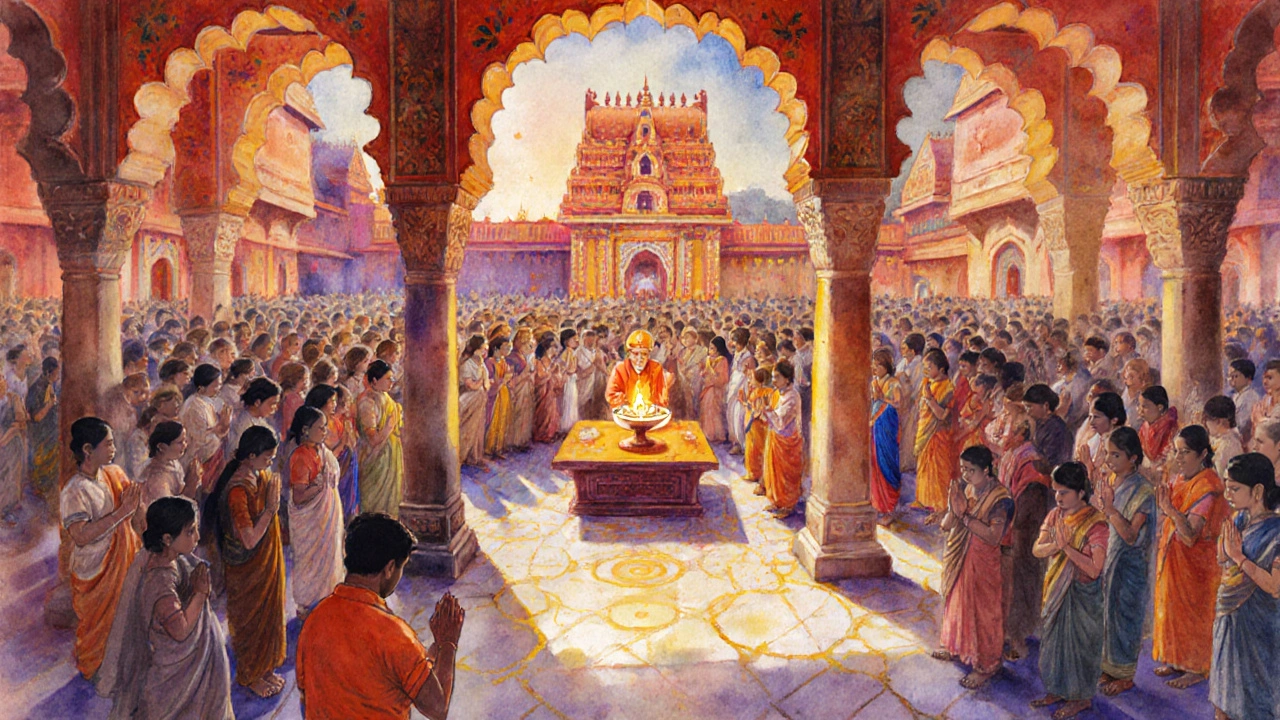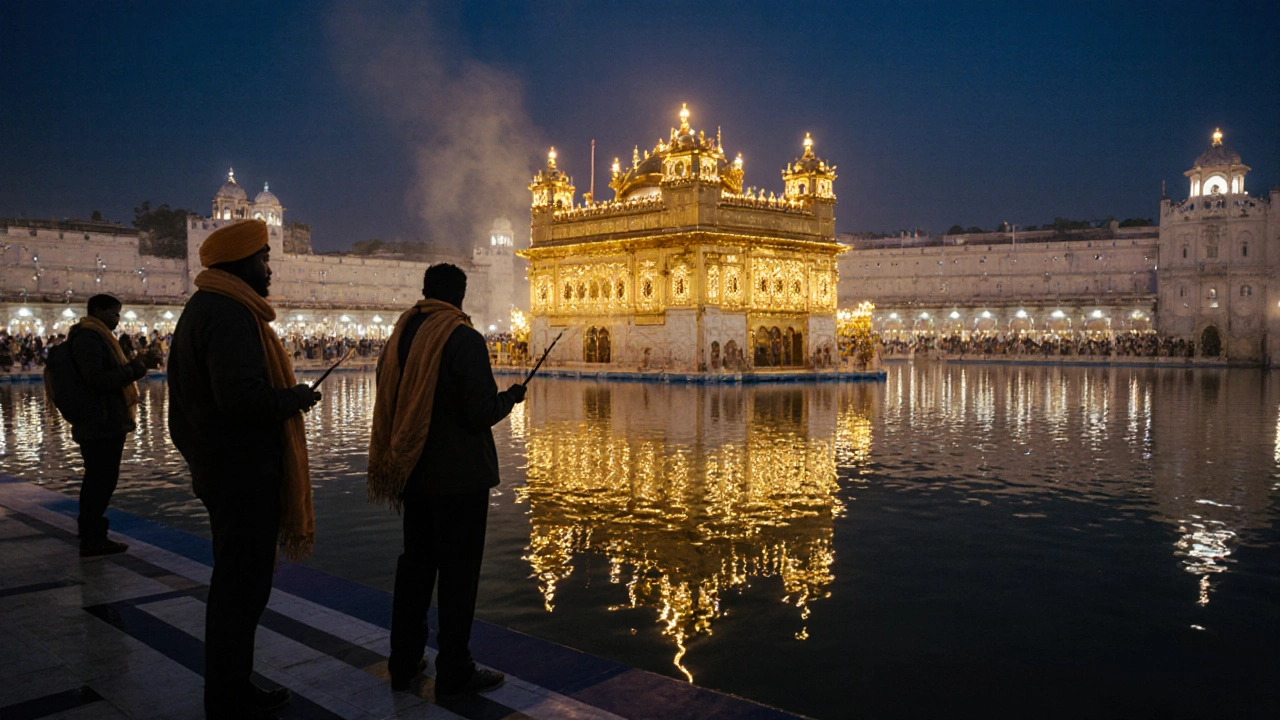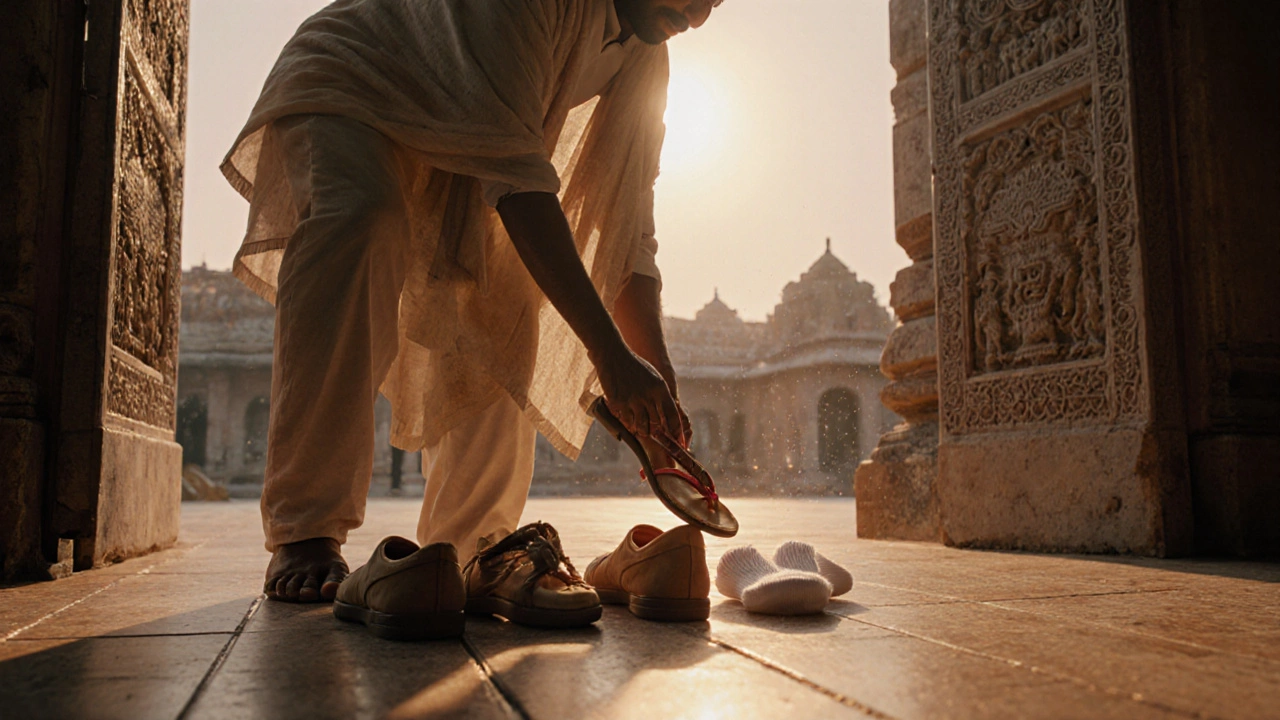Ever wondered why you get stared at the moment you step inside an Indian temple? You’re not alone. The sheer variety of rituals, architecture, and local customs can feel overwhelming, but a little know‑how turns a simple stopover into a memorable cultural experience.
Key Takeaways
- Remove shoes before entering any shrine and keep them neatly arranged.
- Dress modestly: cover shoulders, knees, and avoid revealing clothing.
- Always greet the deity with a respectful Namaste and a slight bow.
- Participate in Puja only if invited, and never disrupt ongoing rituals.
- Accept and modestly enjoy Prasad if offered-it’s a sign of goodwill.
Below is a step‑by‑step guide that covers everything from preparation to post‑visit etiquette, with concrete examples from famous sites like Meenakshi Temple in TamilNadu and Kashi Vishwanath in Varanasi.
1. Preparing for Your Temple Trip
Research the specific temple you plan to visit. Some shrines, such as the Golden Temple in Amritsar, have free entry and a mandatory donation box, while others, like the Brihadeeswarar Temple in Thanjavur, restrict photography inside the sanctum.
Pack a small bag with:
- A clean pair of socks (many temples provide shoe racks but not socks).
- A lightweight scarf or shawl for covering shoulders.
- Hand sanitizer-many pilgrims wash hands before a ritual.
Timing matters too. Arriving early, right at sunrise, means fewer crowds and a quieter atmosphere for contemplation.
2. The First Step: Removing Shoes
Across India, removing shoes is non‑negotiable. The practice stems from the belief that dirt from the outside world should not enter a sacred space.
How to do it right:
- Enter the shoe rack area (often a tiled platform) and line up your shoes neatly.
- If you see a designated line, follow it-this shows respect for local order.
- Place socks on the floor if you’re uncomfortable walking barefoot; many locals do this.
Never wear shoes inside the main hall; if you’re caught, you’ll be politely escorted out.
3. Dressing the Part
Modesty is key. Here’s a quick visual checklist:
- Shoulders: Covered. A simple cotton shawl works wonders.
- Knees: Covered. Long skirts, trousers, or ankle‑length dresses are safe bets.
- Headwear: Not required, but in some Vaisnavite shrines, men remove hats as a sign of humility.
If you’re attending a festival like Holi at a temple, bright colors are welcomed-just make sure they’re not too revealing.

4. Greeting the Deity and Fellow Pilgrims
When you enter the inner courtyard, pause, face the main sanctum, and gently say Namaste while placing your palms together at chest level. This gesture acknowledges both the deity and the surrounding worshippers.
In heavily visited temples, you’ll see a sea of heads bowed in unison during the Aarti. Joining in-by waving a lighted camphor lamp or simply clapping along-shows solidarity.
5. Understanding the Rituals: Puja and Prasad
Puja is a structured offering to the deity, often involving incense, flowers, and a bell. If you’re invited to participate, follow these simple rules:
- Stand at a respectful distance unless told otherwise.
- Do not touch the priest’s items unless you’re handed a small offering.
- Keep your phone on silent; flash photography can disturb the chanting.
When the priest distributes Prasad-a sweet or dry offering-accept it with both hands. It’s considered a blessing; refusing it can be seen as disrespectful.
6. The Sanctum Sanctorum (Garbhagriha) - A No‑Go Zone
The innermost chamber, known as the Sanctum sanctorum, houses the main idol. Most temples prohibit entry for non‑priests, especially in major shrines like Kashi Vishwanath. Even if doors are open, remain outside, observe quietly, and never attempt to touch anything.
In some South Indian temples, you may glimpse the sanctum through a small doorway. This limited view is intentional-allowing devotees to feel the deity’s presence without direct contact.
7. Respecting the Architecture: Vedic Design and Symbolism
Indian temples are built according to Vedic architecture, where every pillar, tier, and carving has a meaning. For instance, the towering gopuram at the front of a Dravidian temple represents the mountain’s ascent to heaven.
When you walk around the pradakshina path (circumambulation), keep to the left side-this mirrors the traditional flow of energy. Also, avoid stepping on any carpet or decorative tiles, as they are considered sacred.

8. Do’s and Don’ts - Quick Reference Table
| Do | Don’t |
|---|---|
| Remove shoes before entering the hall. | Leave shoes inside the main sanctuary. |
| Dress modestly-cover shoulders and knees. | Wear sleeveless tops or shorts. |
| Use a soft voice during prayers. | Talk loudly or make phone calls inside. |
| Accept offered Prasad with both hands. | Refuse food or sweets; it may offend the priest. |
| Follow the local crowd when walking the pradakshina path. | Walk against the flow or cut across sacred zones. |
9. Special Situations: Festivals and Night Visits
During major festivals like Diwali or Navratri, temples stay open late and the atmosphere is electric. If you attend:
- Bring a small donation-most festivals have a communal fund.
- Expect crowds; keep your belongings close.
- Enjoy the illuminated deepa (lamp) rituals, but never touch the oil lamps.
Night visits to the Golden Temple create a surreal reflection on the water. Dress warmly, as evenings can be chilly even in tropical regions.
10. Post‑Visit: Respect Extends Beyond the Gates
When you leave, take a moment to reflect. Many pilgrims write down a wish or a brief prayer in a notebook they keep for future trips. This personal ritual reinforces the respect you showed inside.
If you’re traveling with a group, share your experiences-especially any subtle etiquette nuances you noticed. It helps future travelers avoid common pitfalls.
By keeping these points in mind, your next trip to any Indian temple will feel like a genuine spiritual adventure rather than a cultural faux pas. Whether you’re marveling at the towering spires of Meenakshi Temple or listening to the rhythmic chants at Kashi Vishwanath, you’ll walk away with respect, insight, and unforgettable memories.
Frequently Asked Questions
Can I take photos inside Indian temples?
Photography policies vary. In most North Indian shrines, flash and tripod use are prohibited inside the sanctum. South Indian temples often allow non‑flash photography in the outer courtyards but restrict it near the deity. When in doubt, look for signage or ask a priest.
Is it okay to bring food or drinks into a temple?
Generally, no. Only the priest or designated volunteers will distribute Prasad. Eating or drinking inside the main hall is considered disrespectful.
Do I need to bring a donation?
Donations are optional but appreciated. Many temples have a donation box near the entrance. During festivals, larger communal contributions are encouraged.
What should I wear if I’m a woman visiting a temple?
A modest dress or long skirt with a shawl works well. Avoid sleeveless tops, short shorts, or tight-fitting clothes. A simple pair of sandals is fine as long as you can remove them easily.
Can I join a temple’s daily Aarti?
Yes, most temples welcome visitors to join the Aarti. Stand at a respectful distance, follow the crowd’s movements, and you can light a small incense stick if you wish.
